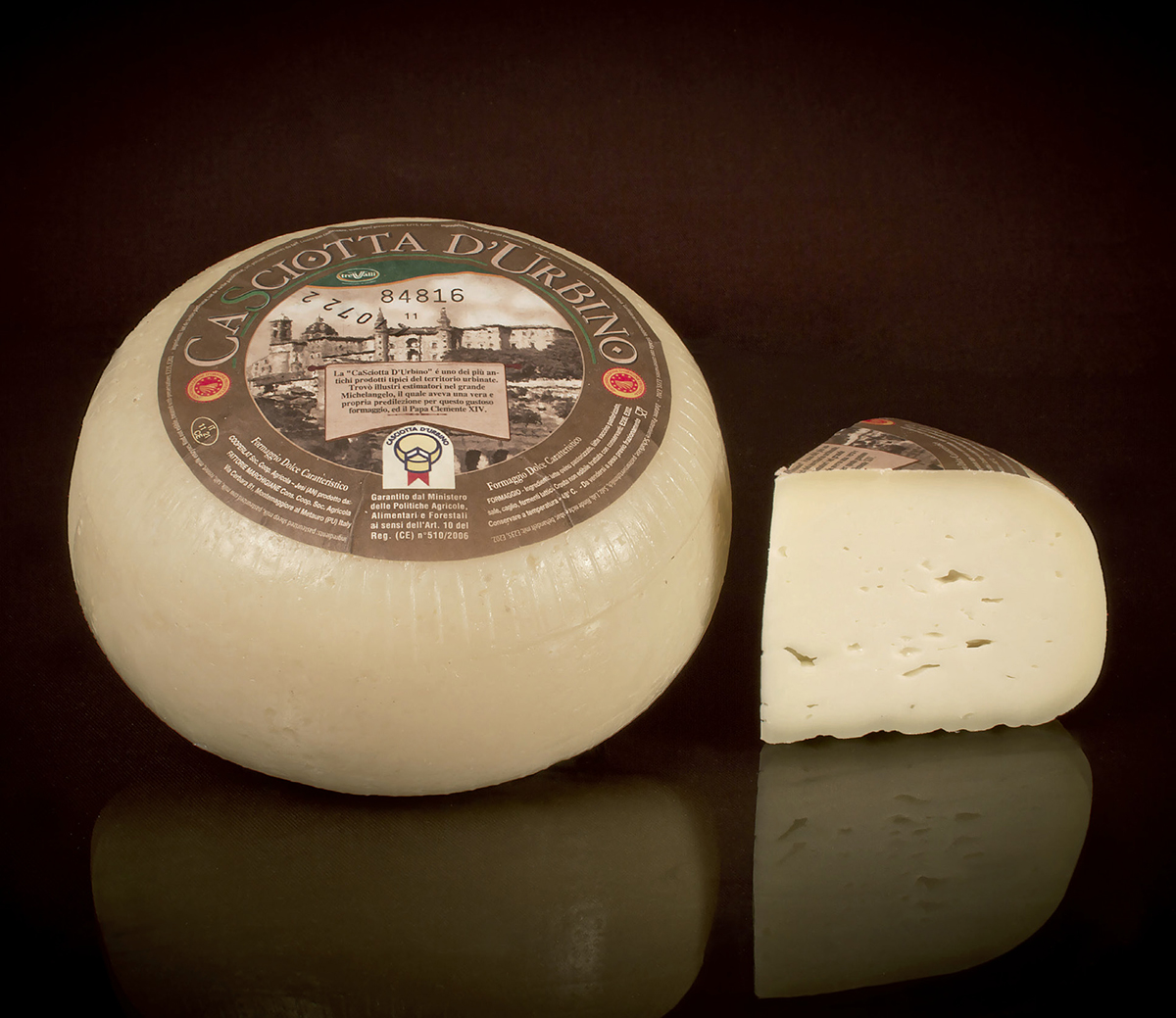
Casciotta d'Urbino DOP, a latte misto, a pasta molle
Casciotta di Urbino. Casciotta d'Urbino PDO is a type of casciotta Italian cheese made from 70% sheep's milk and 30% whole cow's milk. This semi-soft cheese can only be made in the Pesaro-Urbino province of Italy with features and characteristics attributable to the area. 'Cascio' which means cheese from an ancient past was produced.
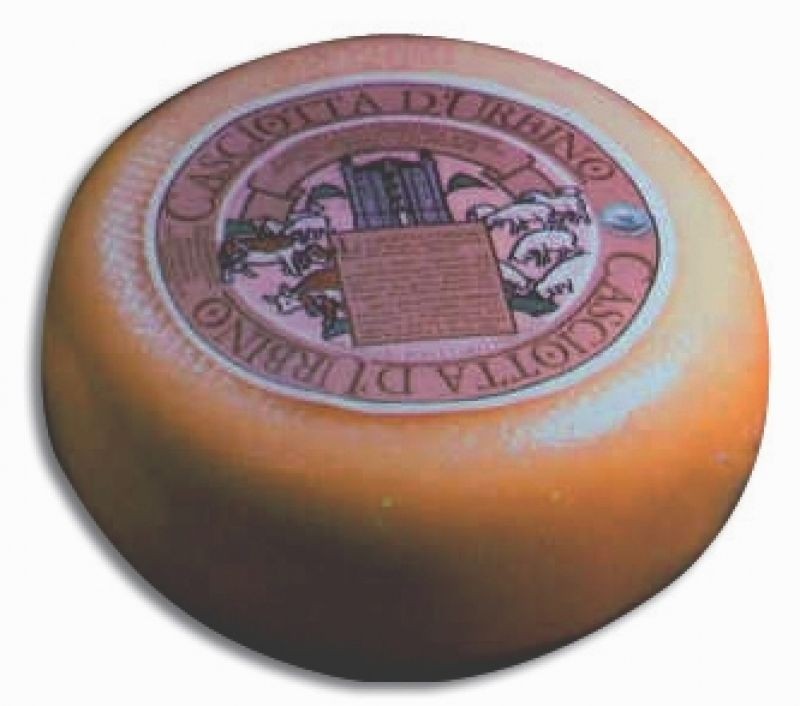
Casciotta D’Urbino Tipicità Marche Prodotti Tipici Marche Vacanza
Casciotta d'Urbino is usually sold as a fresh cheese, as a result its taste is sweet and slightly acidic, with a distinct milky aroma. It is also famous for its small dimensions, with a maximum diameter of 16 cm and often not even weighing 1kg. Casciotta is the perfect cheese for a cutting board of cold cuts, especially with Prosciutto di San.
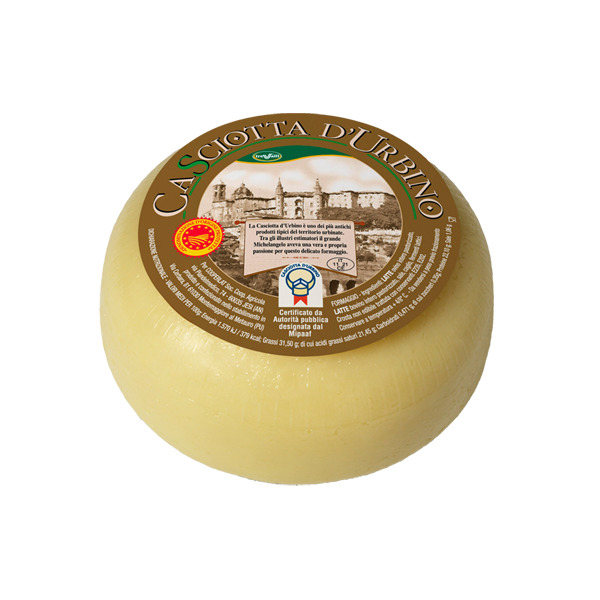
Casciotta di Urbino DOP Trevalli Cooperlat
Consorzio Tutela Casciotta di Urbino DOP Via Cerbara, 81 - 61030 COLLI AL METAURO (PS) Italy . Tel. e Fax +39 0721 87981 [email protected] Codice Fiscale 92009090413 P.IVA 02628670412 Numero REA PS - 197153 CREDITS. ×. Credits (D) Developed EIDOS.
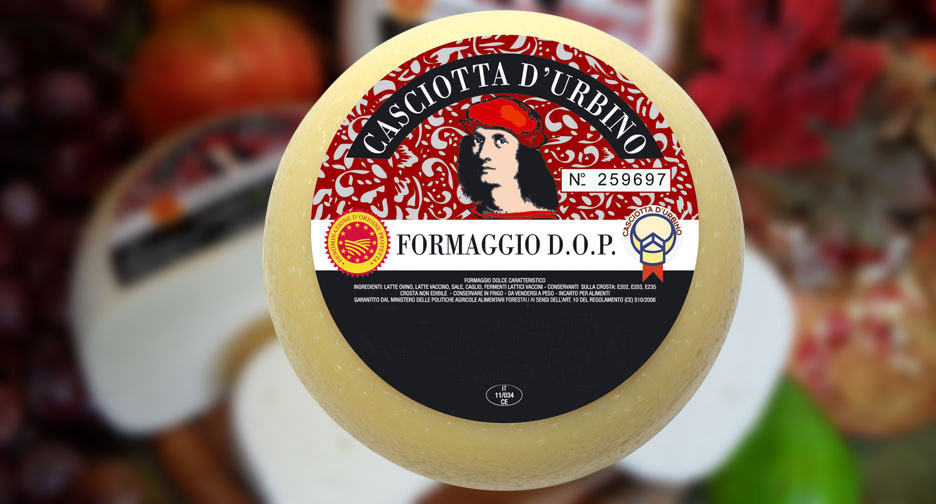
Casciotta d'Urbino DOP, a latte misto, a pasta molle
The only Italian caciotta cheese that has been recognized the PDO (Protected Designation of Origin) is the Casciotta di Urbino in 1996. This cheese, typical of the province of Pesaro and Urbino, is made with 70-80% sheep's milk and the remaining 20-30% is made with cow's milk. Characterized by a soft paste-like texture and a sweet milky taste.
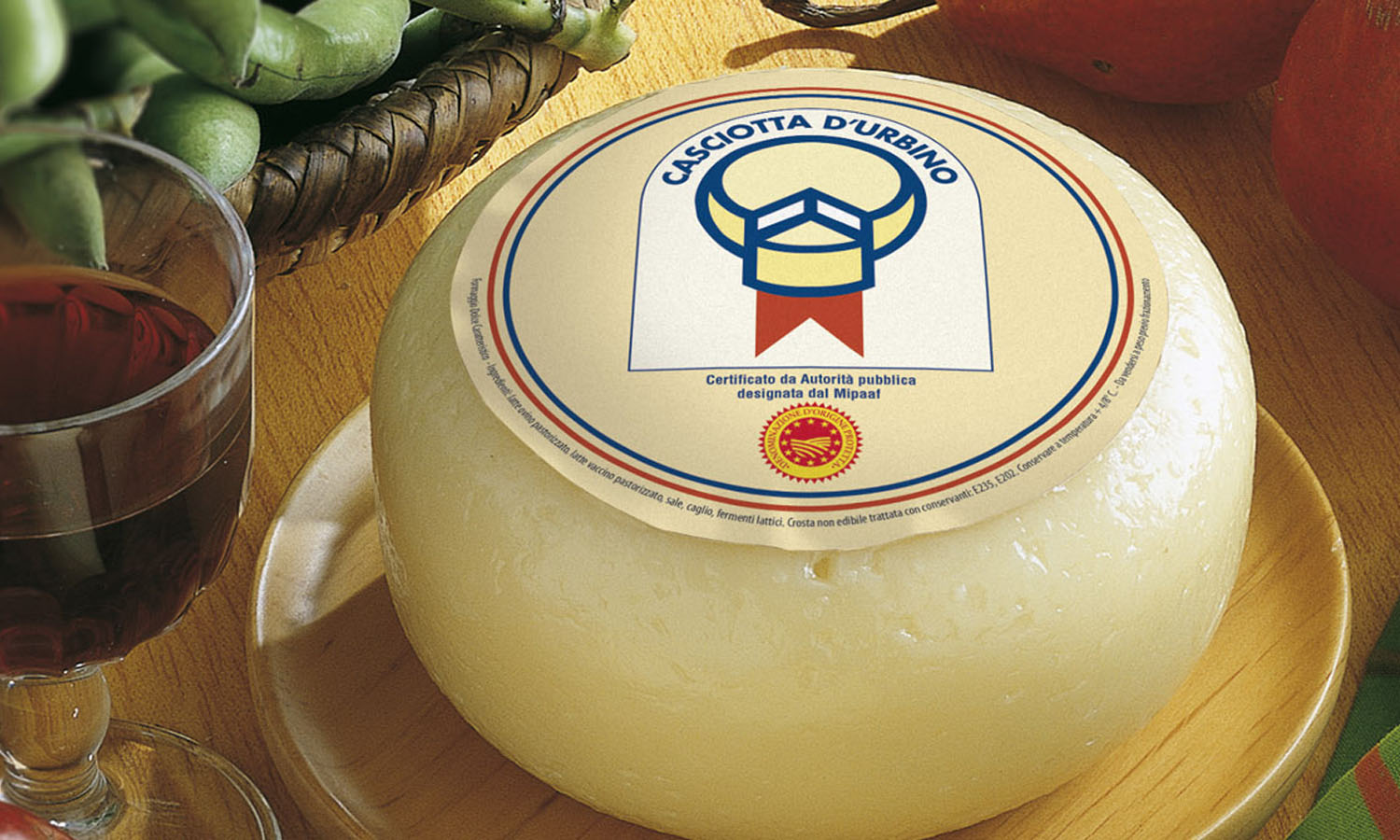
Casciotta d'Urbino DOP Ricette Descrizione Storia Caratteristiche
Casciotta di Urbino DOP. Supposedly this was one of Michelangelo's favorite cheeses that he loved to share with friends. It's a semi-hard sheep's cheese, delightful served with bread and salami and a glass of white wine. It's made in the Pesaro-Urbino province.

Casciotta d’Urbino DOP Qualigeo
Urbino is a walled town of about 15.000 in the Pesaro-Urbino province of Le Marche, known for its university (one of the oldest in Europe) and its architectural and artistic patrimony, which received UNESCO World Heritage status in 1998. Its name likely comes from the Latin word urbs-urbis, "city," and the adjective binus-a-um, which means.
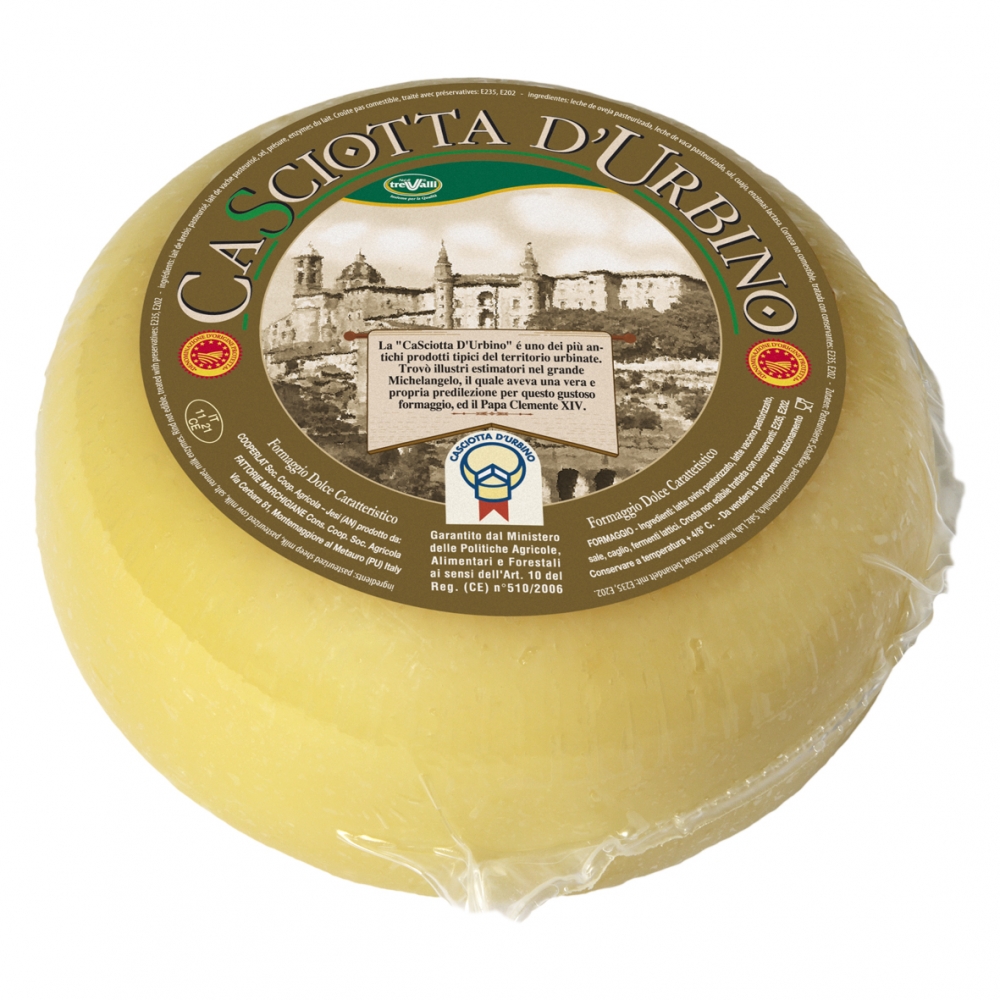
casciottadiUrbino
Consorzio di tutela Casciotta d'Urbino: Provvedimento: Reg. CE n.1107/96 (GUCE L. 148/96 del 21.06.1996) La Casciotta d'Urbino è un formaggio italiano a Denominazione di origine protetta, tipico della Provincia di Pesaro e Urbino Storia . Formaggio realizzato sin dall'antichità, era il.

Casciotta d'Urbino il primo formaggio delle Marche a diventare DOP
Casciotta d'Urbino PDO is a type of casciotta Italian cheese made from 70% sheep's milk and 30% whole cow's milk. This semi-soft cheese can only be made in the Pesaro-Urbino province of Italy with features and characteristics attributable to the area. 'Cascio' which means cheese from an ancient past was produced since the times of Dukes.

Casciotta d'Urbino dop La Basilica di San Formaggio
Caratteristiche nutrizionali. La Casciotta di Urbino DOP è un formaggio misto di latte intero pastorizzato di pecora (70-80%) e capra (20-30%) prodotto esclusivamente nella provincia di Pesaro e Urbino nelle Marche e in alcuni comuni della provincia di Rimini in Emilia-Romagna. Con stagionatura minima di 20 giorni, è a pasta morbida con.
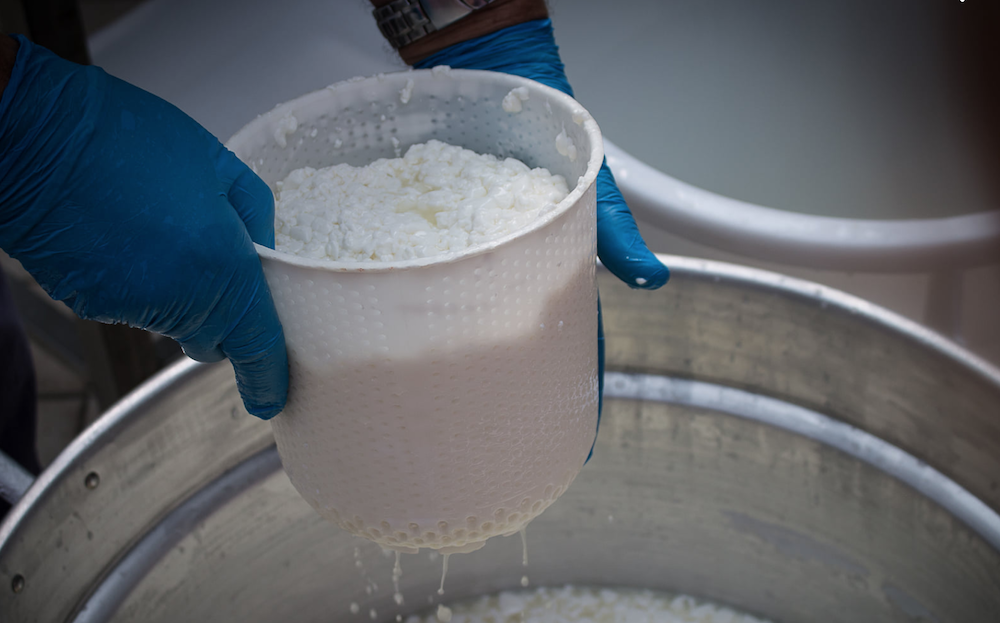
La Casciotta d'Urbino Dop NonToccatemiIlFormaggio
I.P.S.S.E.O.A. Severo Savioli di Riccione: Cremoso alla Casciotta d'Urbino . ARCHIVIO VIDEO. Consorzio Tutela Casciotta di Urbino DOP Via Cerbara, 81 - 61030 COLLI AL METAURO (PS) Italy . Tel. e Fax +39 0721 87981 [email protected] Codice Fiscale 92009090413 P.IVA 02628670412 Numero REA PS - 197153

In pericolo la Casciotta d’Urbino Il Latte
La pasta della casciotta è di colore bianco paglierino, mentre la sua crosta è gialla, d'intensità crescente con la stagionatura la quale è di circa un mese. Una peculiarità della casciotta d'Urbino risiede nella sua forma rotonda e bombata per merito degli antichi stampi forati che accolgono la cagliata e che tradizione vuole in.

La Casciotta di Urbino diventa ..un gelato con le mandorle Cronache
Soft and dense, with a sweet and delicate taste, Casciotta di Urbino is a real delight - a cheese to be discovered. Produced in Italy's region of Marche, it's a regional delicacy that has been adored for ages.The story of the Casciotta di Urbino is entwined with that of the sculptor Michelangelo Buonarroti who was a passionate consumer of this cheese.
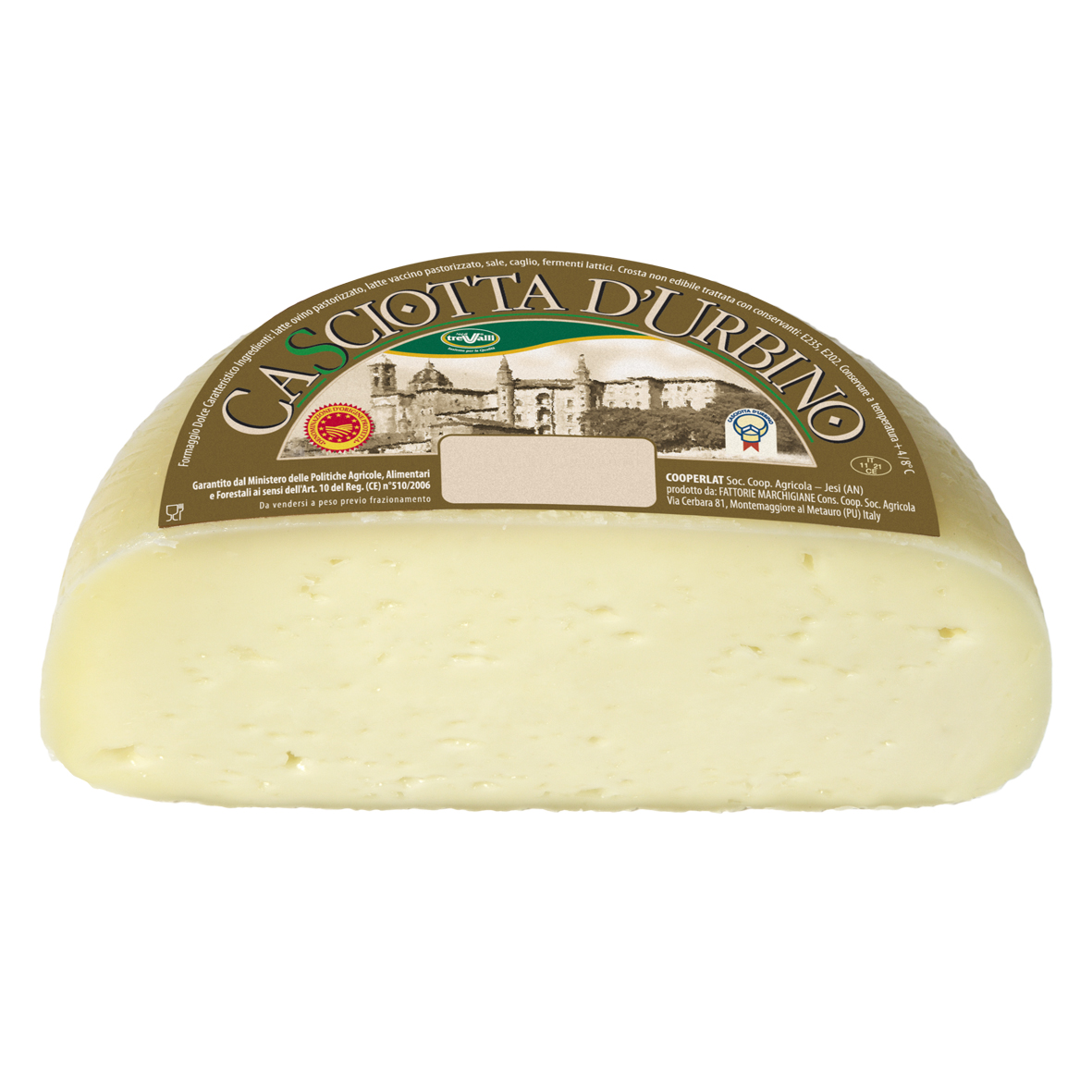
Casciotta d'Urbino DOP, a latte misto, a pasta molle
Furthermore, in 1761, Cardinal Manganelli, future Pope Clemente XIV, wrote a letter from Rome, thanking Abbot Antonio Tocci di Cagli for having sent him delicious casciotte. Prosuction area. The production area of Casciotta d'Urbino PDO is within the provinces of Pesaro and Urbino, in The Marches region. Operators: 47 Production(KG): 229.862

Casciotta d'Urbino Dop Salumi e Formaggi Spesa Online a casa
La casciotta è un formaggio a base di latte ovino intero (70-80%) e di latte vaccino (20-30%), derivante da allevamenti situati nella provincia di Pesaro e Urbino (Marche) e nei territori di Novafeltria, San Leo e Sant'Agata Feltria, passati nel 2009 sotto alla provincia di Rimini (Emilia Romagna). Le origine marchigiane del prodotto sono evocate anche dal termine cascio contenuto nel suo.

La Casciotta di Urbino proprietà e ricette
Casciotta d'Urbino is cylindrical in shape with a flat base, rounded sides and a diameter of 12 to 16 cm. It weighs from 800 to 1200 grams. The inner part of the cheese is white or straw in colour whereas the soft, fragile outer part is characterised by light markings. The crust is soft and straw coloured, with a width of nearly 1mm.

CASCIOTTA DI URBINO DOP Formaggio grasso, di breve stagionatura, a
The 'Urbino Casciotta' [pronounced according to the local dialect rather than the more usual 'caciotta'] was awarded denomination of protected origin (DOP - denominazione di origine protetta) status in 1982 as a unique example amongst the many central Italian caciottas. It is produced by blending 70% sheep's milk with 30% cow's milk.